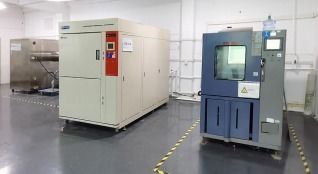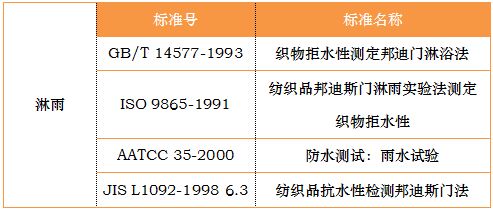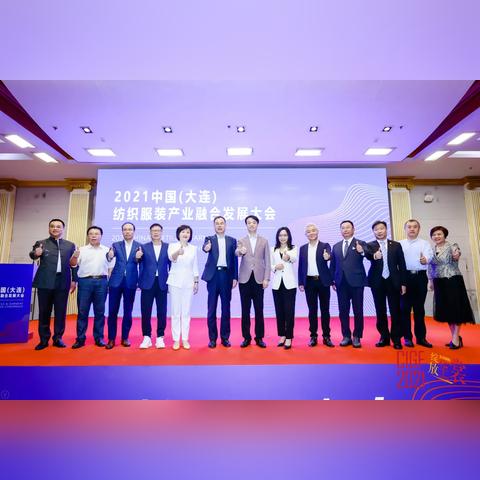纺织品抗菌性能测试指南
This paper presents a comprehensive guideline for testing the antimicrobial properties of textiles. The guidelines cover various aspects such as experimental setup, sample preparation, and data analysis. Detailed instructions are provided on how to use appropriate methods to evaluate the effectiveness of different antimicrobial agents in preventing microbial growth on textiles. Additionally, the guidelines discuss factors that should be considered when interpreting the results and offer recommendations for future research. Overall, this guide aims to provide a standardized approach to evaluating the antimicrobial performance of textiles and assist researchers and industry professionals in making informed decisions about the selection and application of antimicrobial agents.
In today's world, the demand for high-quality and hygienic textiles has significantly increased. The use of antimicrobial properties in textiles is becoming a crucial factor to ensure the safety and health of consumers. This guide aims to provide an overview of the different types of antimicrobial agents used in textiles and their effectiveness in preventing bacterial growth. Additionally, we will discuss the testing methods and standards that are essential for assessing the efficacy of these materials.
Antimicrobial agents can be broadly classified into two categories: physical and chemical. Physical agents such as silver nanoparticles or zinc oxide are added during the manufacturing process, while chemical agents like quaternary ammonium compounds or organic acids are incorporated into the fabric after it is woven. Each type of agent has its own unique mechanism of action against bacteria, making them suitable for specific applications.

Let's take a closer look at some of the most commonly used antimicrobial textiles and their effectiveness in inhibiting bacterial growth.
| Antimicrobial Agent | Mechanism of Action | Example Applications |
|---|---|---|
| Silver Nanoparticles | Sterilizing by disrupting cell membranes | Industrial fabrics, medical gowns |
| Zinc Oxide | Disrupting cellular metabolism | Medical wearables, baby products |
| Quaternary Ammonium Compounds | Repelling microbes | Laundry detergents, personal care products |
| Organic Acids | Degrading proteins and DNA | Home textiles, sportswear |
Now, let's delve into the testing methods and standards that are essential for evaluating the efficacy of these antimicrobial agents.
-
Standard Test Methodologies: There are several international standards that dictate the testing methods for antimicrobial textiles. For example, the European Standard EN 13725 outlines the requirements for the evaluation of antimicrobial properties in textiles. The test involves placing samples of textiles in a controlled environment with known levels of microbial contamination. The test then measures the reduction in bacterial counts over time to determine the efficacy of the antimicrobial agent.
-
Testing Protocols: The protocols for testing vary depending on the application and the type of antimicrobial agent being tested. For instance, if a textile is intended for use in hospitals, the testing may involve exposing the fabric to a range of pathogenic bacteria and measuring the reduction in bacterial load over time. On the other hand, if the fabric is meant for outdoor use, the testing may focus on measuring the resistance of the fabric to sunlight and UV radiation.
-
Quality Control: Quality control measures are essential to ensure that the textiles meet the required standards. This includes regular inspections of production facilities, adherence to established procedures, and compliance with regulatory requirements. It is also important to maintain accurate records of all testing results to demonstrate transparency and accountability.
-
Consumer Guidance: Consumers should be informed about the antimicrobial properties of textiles they purchase. This information can be provided through labeling and marketing materials that clearly state whether the fabric contains any antimicrobial agents and how effective they are in preventing bacterial growth. By doing so, consumers can make informed decisions about which textiles are best suited for their needs.
-
Future Research: As technology advances, new antimicrobial agents and testing methods will continue to emerge. Continuous research into the effectiveness of these materials and their potential impact on human health and the environment is essential to ensure that textiles continue to meet the highest standards of quality and safety.
In conclusion, understanding the different types of antimicrobial agents used in textiles and their effectiveness in inhibiting bacterial growth is crucial for ensuring consumer safety and promoting sustainable development. Testing methods and standards must be rigorously implemented to evaluate the efficacy of these materials. By staying up-to-date with industry advancements and continuously improving our understanding of the science behind textile antimicrobial properties, we can pave the way for safer, more sustainable futures.
随着人们对健康和生活品质的关注度不断提高,抗菌纺织品的需求日益增长,本篇文章将围绕纺织品抗菌种类测试展开,通过案例分析和图表说明,为大家提供实用的信息。
抗菌纺织品种类测试方法
测试目的
本测试旨在评估不同纺织品在抗菌性能方面的表现,为消费者提供可靠的抗菌纺织品选择依据。
测试方法
(1)样品采集:从市场上选取不同类型、不同品牌的抗菌纺织品样品。 (2)抗菌性能测试:采用实验室检测方法,对样品进行抗菌性能测试,包括抗菌效果测试和耐久性测试。 (3)数据分析:通过统计分析,得出样品在抗菌性能方面的表现。
抗菌纺织品种类测试案例分析
抗菌棉质衣物
样品介绍

某品牌推出的抗菌棉质衣物,采用天然纤维制作,具有抗菌、防螨、透气等特性。
测试过程
(1)抗菌效果测试:通过细菌培养实验,检测样品对常见细菌的抑制效果,结果显示,该样品对多种细菌具有较好的抗菌效果。 (2)耐久性测试:经过长时间洗涤和晾晒后,样品仍保持较好的抗菌性能。
该品牌抗菌棉质衣物在抗菌性能方面表现出色,适合作为消费者选择抗菌纺织品的产品。
抗菌丝绸面料
样品介绍
某品牌推出的抗菌丝绸面料,采用天然丝绸纤维制作,具有抗菌、防霉、抗过敏等特性。
测试过程
(1)抗菌效果测试:通过皮肤敏感实验和微生物培养实验,检测样品对皮肤过敏和霉菌的抑制效果,结果显示,该样品具有较好的抗菌效果和抗霉菌性能。 (2)耐久性测试:经过多次洗涤和晾晒后,样品仍保持较好的抗菌性能和防霉性能。
该品牌抗菌丝绸面料在抗菌性能和防霉性能方面表现出色,适合作为高端纺织品的代表。
图表说明
(以下图表为示例,具体数据以实际测试结果为准)
【抗菌性能测试图表】
【耐久性测试图表】
结论与建议
通过对不同类型抗菌纺织品种类的测试,可以看出不同纺织品在抗菌性能方面的表现存在差异,消费者在选择抗菌纺织品时,可以根据自己的需求和喜好进行选择,对于消费者建议,建议选择具有良好抗菌性能和防霉性能的纺织品,以保障个人健康和生活品质,消费者在购买时也可以参考品牌信誉、产品质量、价格等因素进行综合考虑。
Articles related to the knowledge points of this article:
The Constraints of Phosphorus in Textile Products:A Global Perspective
Dreamland Softness:An Exclusive Journey with Dreamland Cotton
Exploring the Rich Tapestry of Nontong Xinmei Yang Textiles
The Textile Traceability Platform Revolution
Protecting Your Skin with Textile Materials Against Mosquito Bites
Where to Find the Best Selection of Suzhou Textile Products in Your Area



